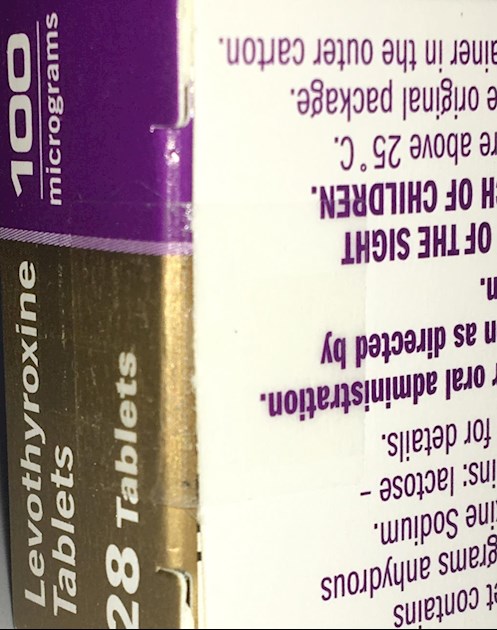Among the very much less important things about levothyroxine tablets is a recent change to packaging.
The outer box of my Almus tablets has a clear plastic seal on the end. It doesn't appear to be anything more than a piece of Sellotape (no obvious markings in ink, or embossing).
I assume this will also be applied to Actavis (Accord) and Northstar packaging. If not right now, sometime soon.
Am now wondering if this is an initiative of Accord? Or a widespread change in the pharmaceutical industry? Or somewhere in-between.
Has anyone noticed this on other levothyroxine products? Or other medicines?
(Obviously, I am asking about recent changes - not all packaging across all medicines.  )
)
I found it quite difficult to photograph - you might have to look quite carefully to see the seal.
[ Correction: I usually get Northstar but this month had to go to Boots. They are Almus, not Northstar. ]
